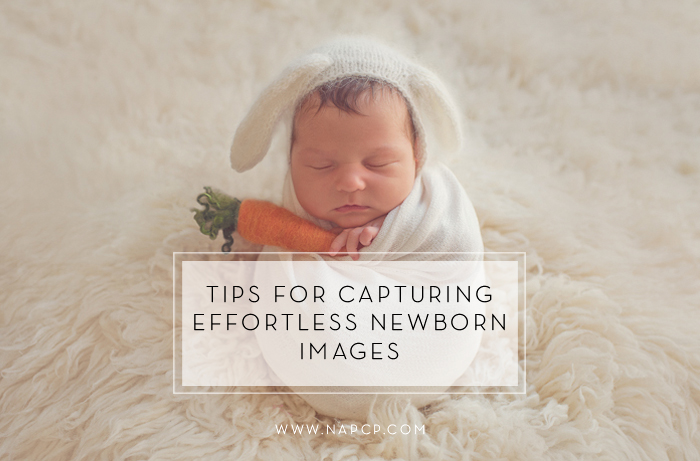
19 Sep Tips for Capturing Effortless Newborn Images

Whether you are a professional photographer, or a parent seeking to capture beautiful images of your own little one, the single most important, yet simplest, thing you can do to set the stage for a successful newborn portrait session is to ensure that your tiny subject is as comfortable as possible. (Although it is a topic for another day, I would be remiss in failing to note that safety should always be a newborn photographer’s highest priority. In my view, photographers who plan to photograph newborns should, at a minimum, participate in a workshop or receive instruction on the safe handling and posing of newborns from a knowledgeable source prior to accepting any clients.)
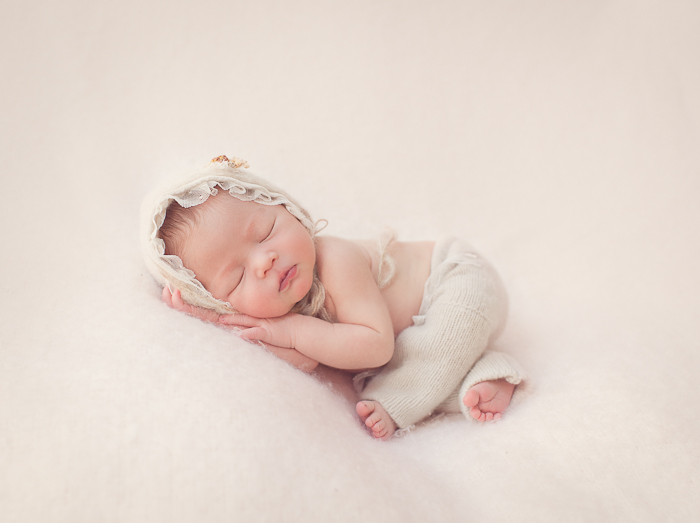
At the risk of stating the obvious, babies are more likely to be content, and to sleep, when they are comfortable. In that regard, the temperature in the room in which the baby will be photographed should be set to a balmy 80-85 degrees, as the baby will likely be at least partially naked for much of the session; space heaters can be particularly helpful in containing the heat to a particular area or room of your studio or home. White noise machines or other products designed to mimic the sounds of a mother’s womb are also very comforting to newborns and, thus, are likely to facilitate sleep. And, of course, a nice full tummy typically translates to a happy, sleepy baby, so it is best if the baby is fed just prior to the start of the session. Finally, although it is nearly impossible to predict or control a newborn’s sleep schedule, I have found that, as a general matter, the late morning hours seem to be a naturally sleepy time for many babies, so scheduling your portraits during that time period might be advantageous.
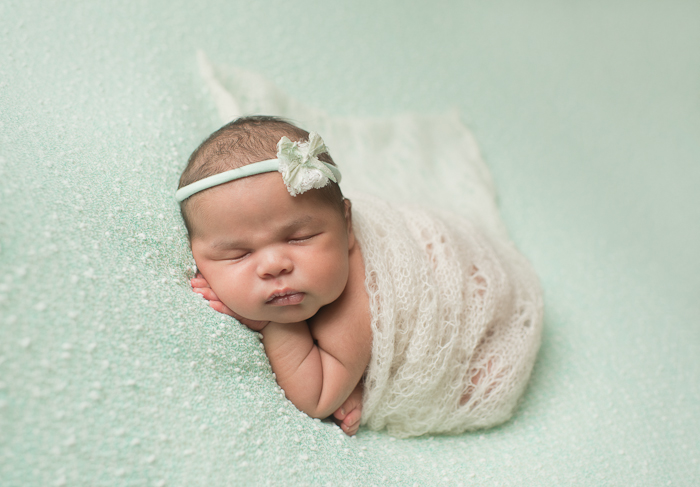
Although no particular equipment is required to create beautiful newborn portraits, a wide angle lens is particularly useful. Unless you are fortunate enough to live in a location with a year-round temperate climate, you will most likely be photographing newborns indoors, where space may be at a premium; a wide angle lens will allow you to work comfortably in those tighter spaces. In addition, a wide angle lens will allow you to remain within arms’ reach of your subject. Such proximity, in my view, is important from a safety perspective, and it additionally enables you to make adjustments to a pose or prop and to quickly capture the shot before the baby shifts positions. (For example, babies frequently move their hands within several seconds of them being placed in particular positions, such as the one in the image below.)
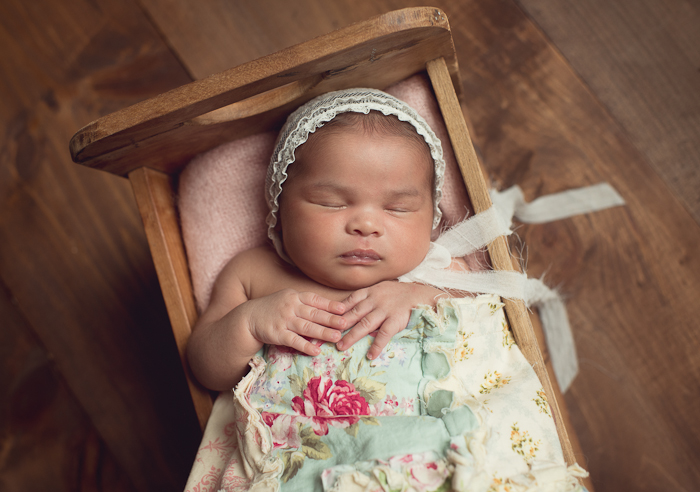
Although I prefer to use my 35mm 1.4 lens for newborn portrait sessions, any lens in the 24mm-50mm range would likely provide the same benefits discussed above.
A macro lens – a lens capable of a 1:1 reproduction ratio — is another invaluable tool for newborn photography. A macro lens allows you to perfectly capture those tiny details – the button nose, the squishy lips, the fuzzy shoulders, the swirl of hair on the forehead, or the tiny little toes – that make each baby unique. Because babies’ features change so quickly as they grow, parents generally adore the sweet detail shots that preserve their memory of their little one during those fleeting first few weeks of life.
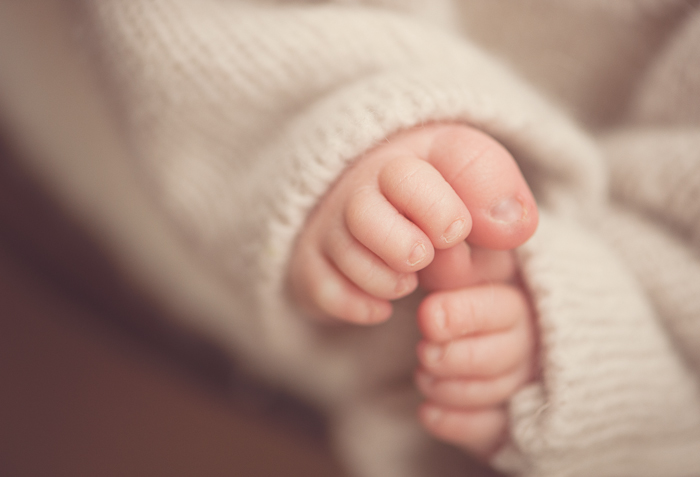
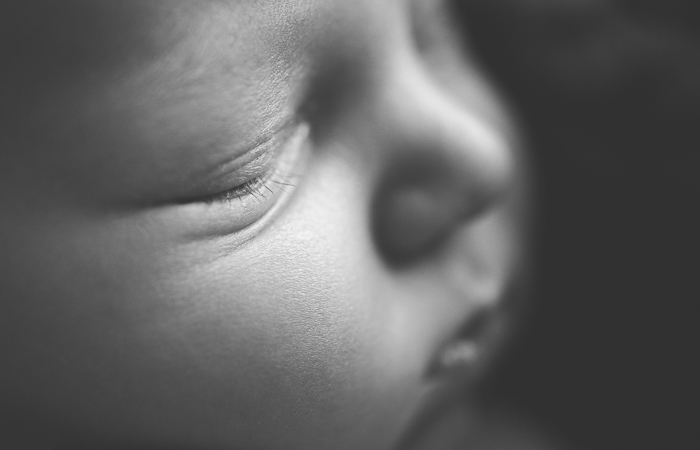
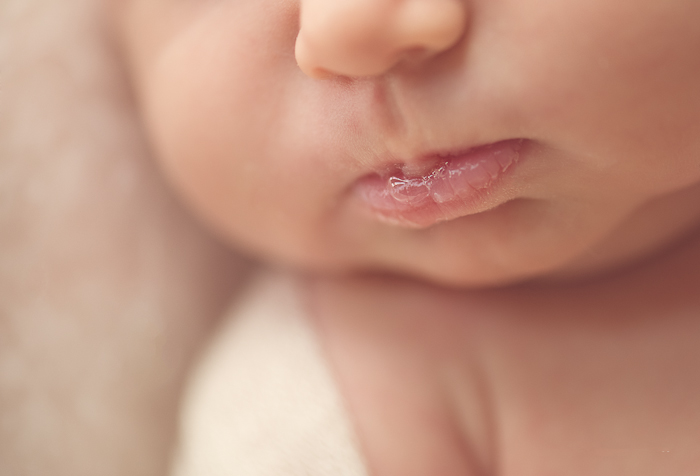
Posing is commonly thought to be one of the more challenging aspects of newborn photography. Although, as with any skill, posing technique necessarily improves with time and practice, there are a few simple tips that you can implement that will not only keep your sessions moving smoothly, but will also make a significant difference in your resulting images.
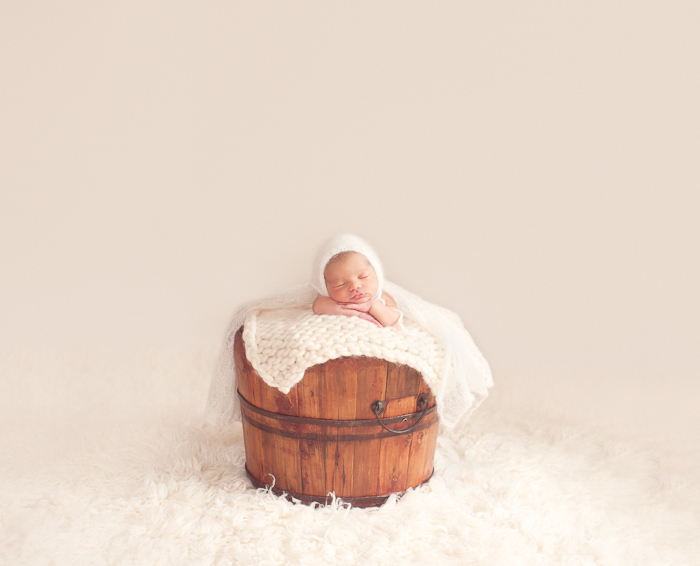
Just like adults, newborn babies are unique individuals with their own personalities and preferences: Some babies love to stretch out their tiny little hands and legs, while others prefer being snugly wrapped; some babies have a strong startle reflex, and would much rather lie on their sides or tummies than on their backs; and some babies simply insist on keeping their hands near their faces.
Follow the baby’s lead.
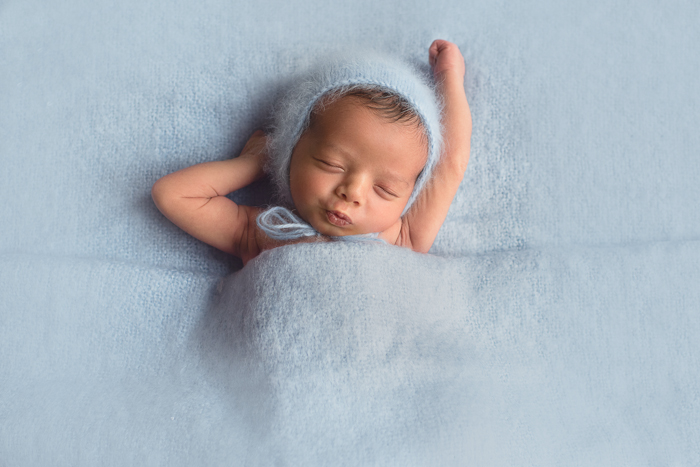
Some babies sleep through an entire session and are content in nearly any position. If a baby seems to be happy in only one or two different positions, you can still capture a variety of different images simply by varying your shooting angle, as in the images below.
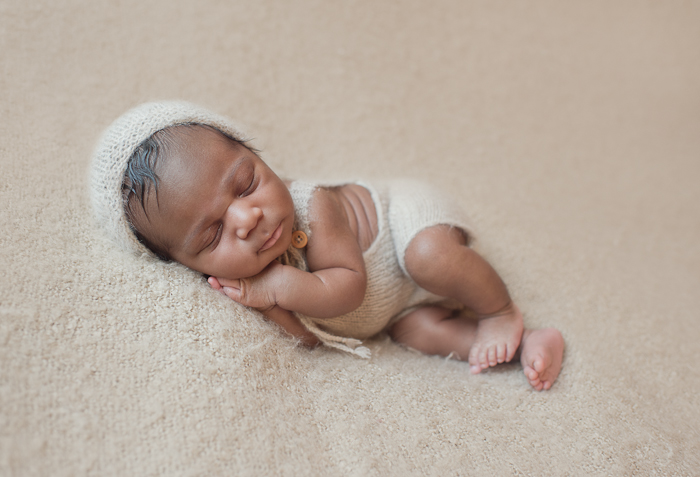
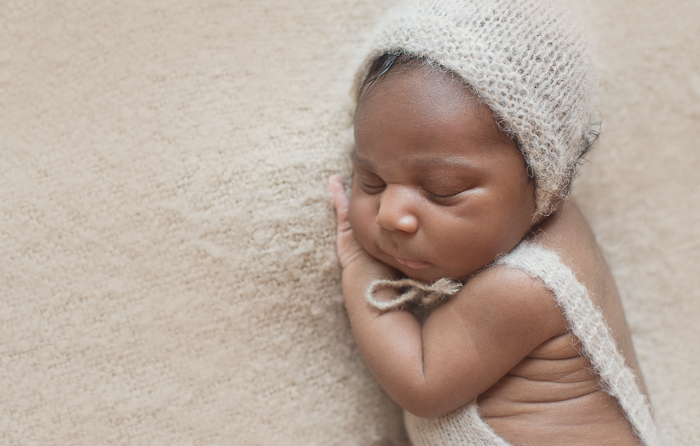
Alternatively, you might switch out props (for example, add a wrap or replace a hat with a headband) or keep the baby in the same position, but move her to a different location.
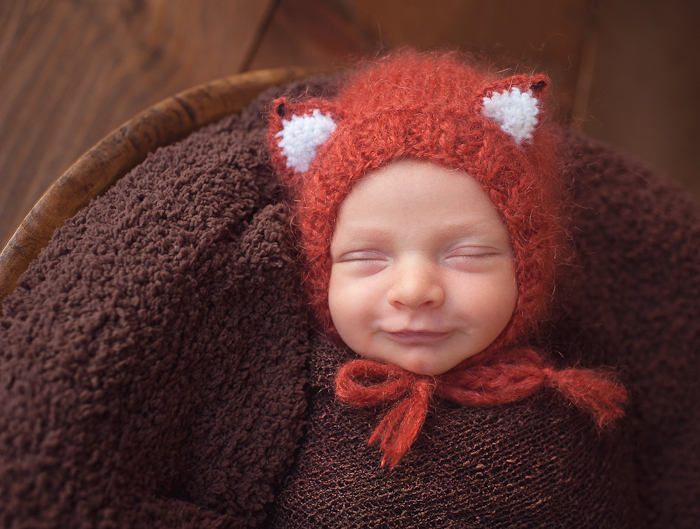
Regardless of any particular pose, there are little “fixes” that can make a dramatic difference in the visual appeal of your portraits. First, check to ensure that no portion of the baby’s face is covered. Blankets or wraps sometimes edge up near the baby’s chin or mouth and, similarly, baby’s hands can occasionally obscure a portion of his face (as distinguished from poses in which baby’s hands are resting sweetly on his cheeks or under the chin). Second, when possible, un-clench a baby’s balled-up hands; this simple act of flattening the baby’s hands will make her look eminently more peaceful and relaxed.
Inevitably, there are occasions on which a baby is unsettled, even after being fed, soothed, and diapered. In such situations, I have found that a snug wrap and some patient lulling nearly always puts the baby to sleep.
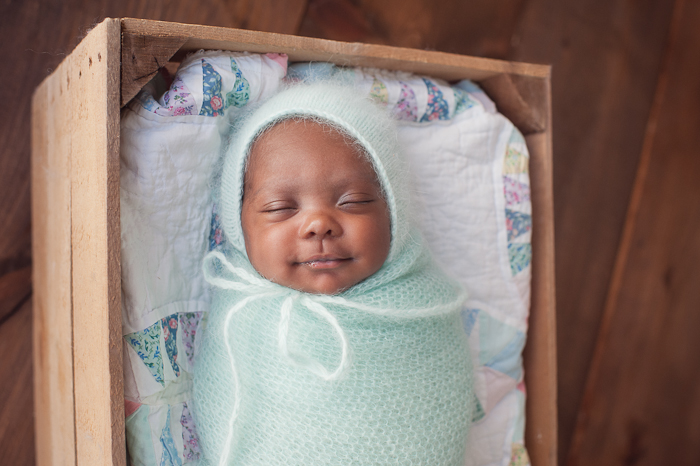
But even if a baby simply doesn’t want to sleep, a wrap will often keep him/her calm enough to capture some beautiful wakeful images.
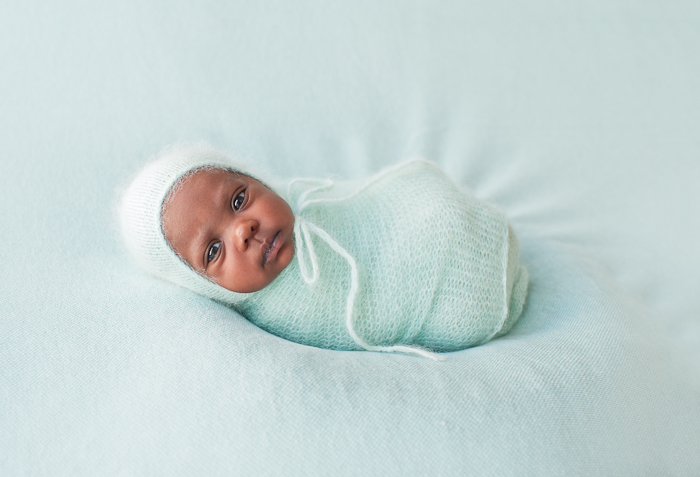
And what parent doesn’t love a portrait that showcases their little one’s bright, beautiful eyes?




1 Comment